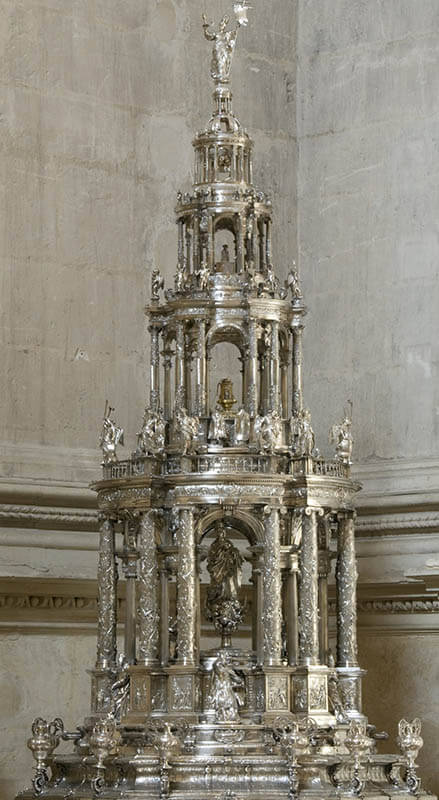
Juan de ARFE Y VILLAFAÑE, 1580 – 1587
Sacristía Mayor
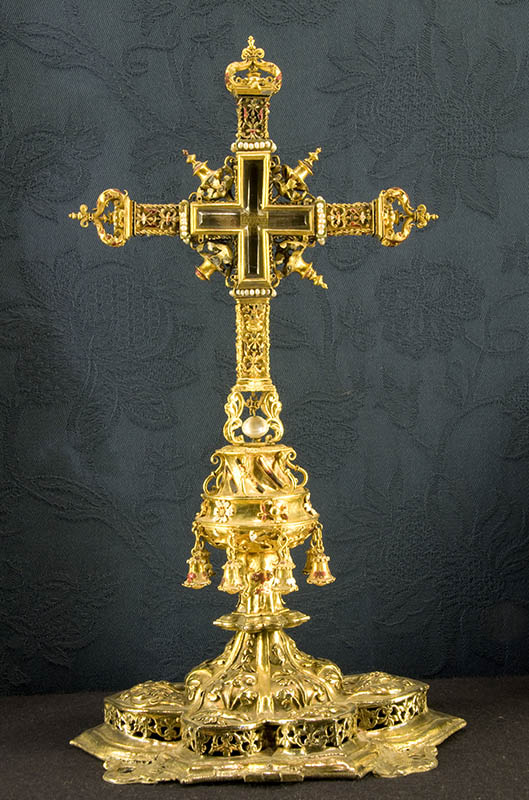
ANÓNIMO, Primer cuarto del siglo XVI
Sala del Tesoro
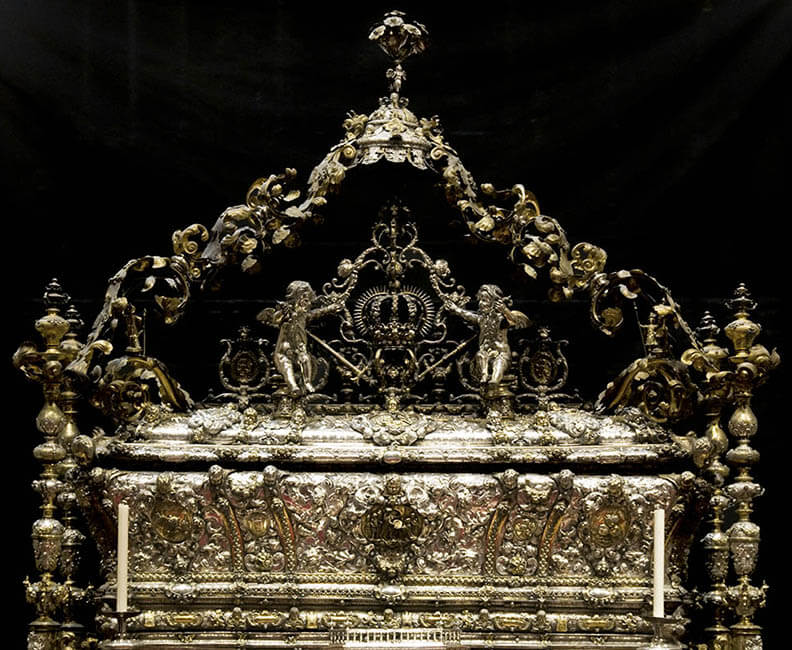
Juan LAUREANO DE PINA y discípulos, 1690-1701 y 1717-1719
Capilla Real
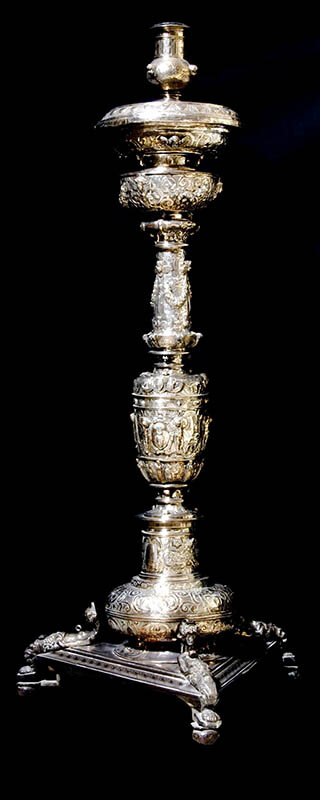
Hernando de BALLESTERO el Mozo, 1579-1581
Sacristía Mayor
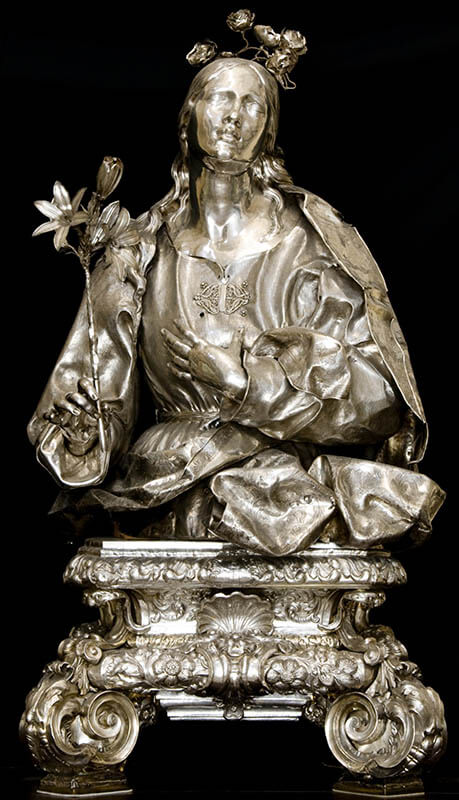
,
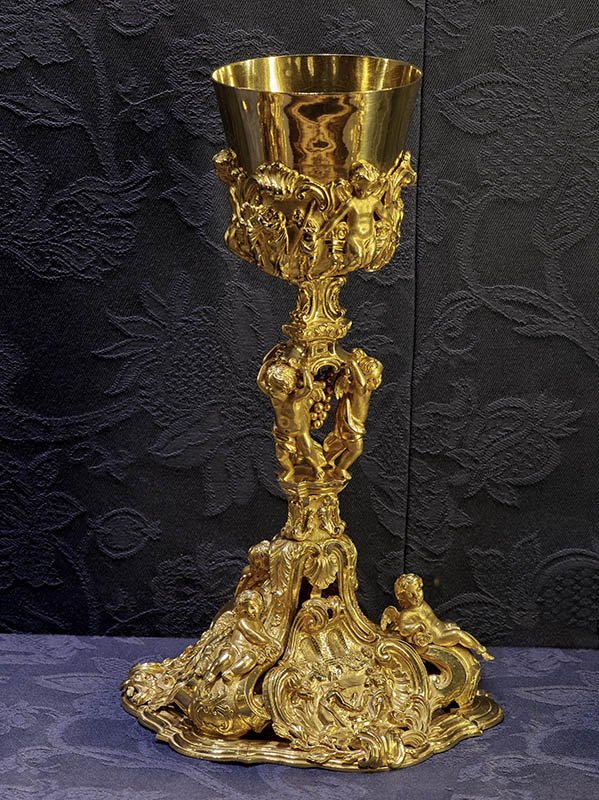
Damián de CASTRO, 1777
Sala del Tesoro
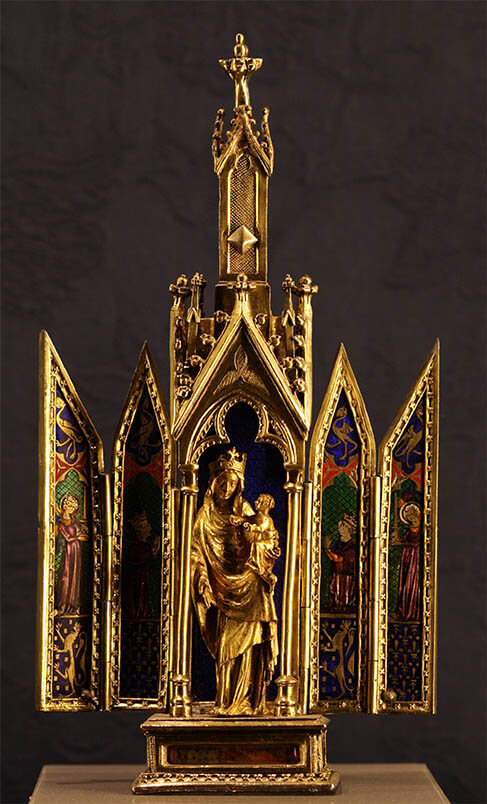
ESCUELA DE PARÍS, 1317 – 1322
Sala del Tesoro
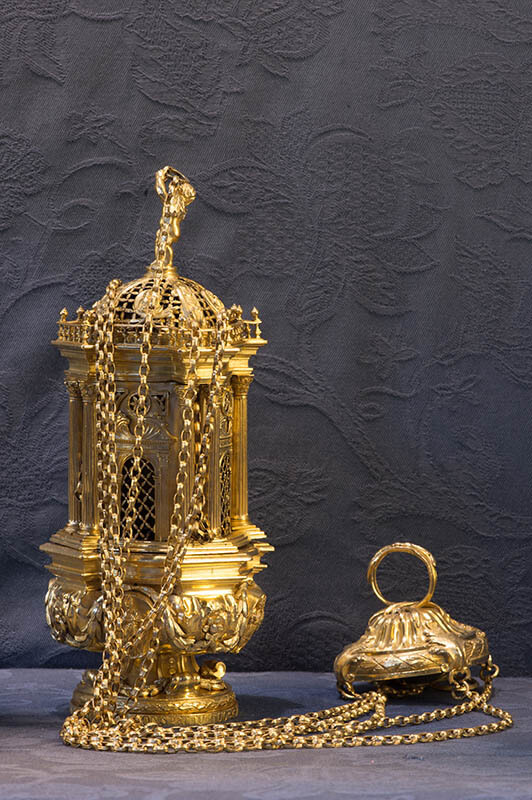
Antonio MÉNDEZ, 1791
Sala del Tesoro
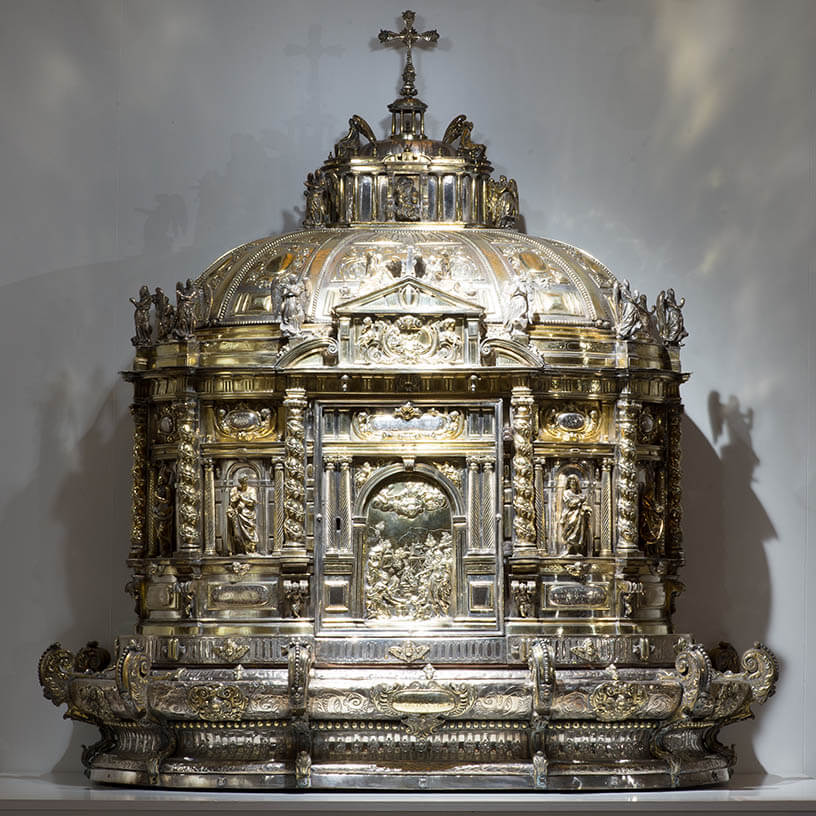
Francisco de ALFARO, 1593-1596
Sacristía Mayor
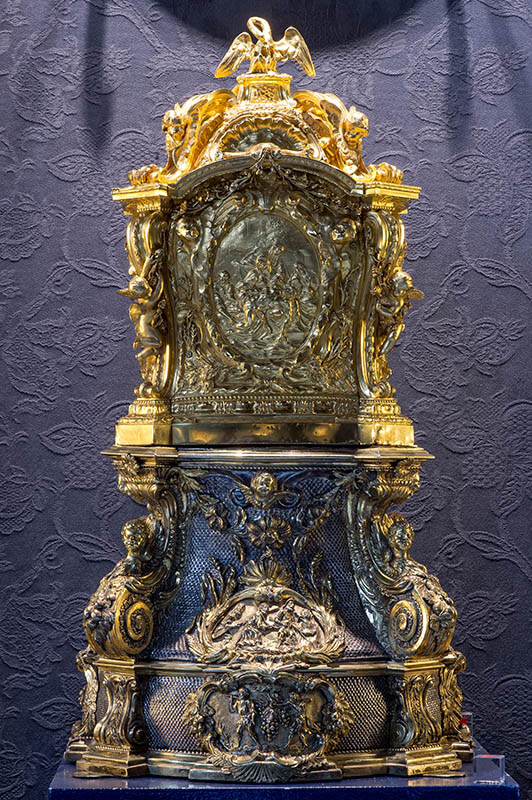
Luis VALADIER de la urna y Francisco LECLARE de la peana, 1771
Sala del Tesoro
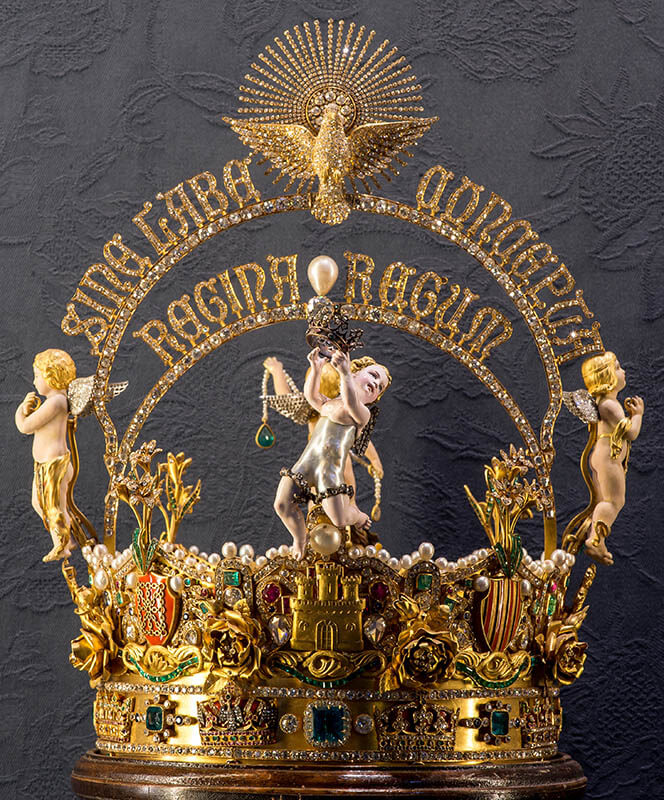
Don Pedro VIVES Y FERRER, 1904
Sala del Tesoro
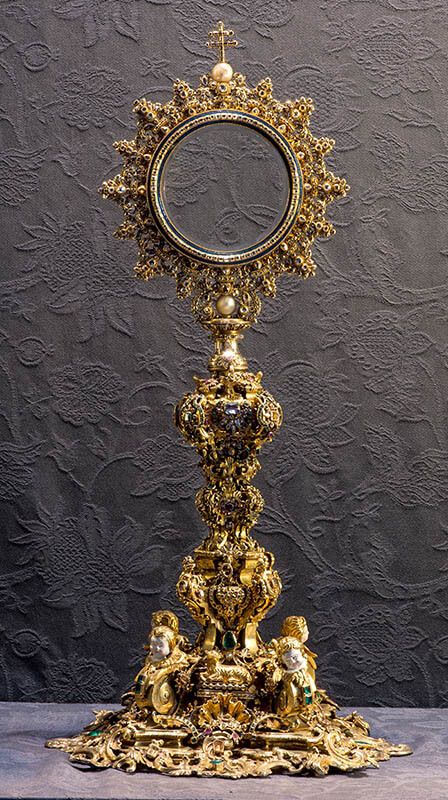
Ignacio THAMARAL, 1729
Sala del Tesoro












IN THIS SECTION:
Goldsmithing
TheCathedral conserves approximately nine hundred pieces of gold and silverware that, recently inventoried, are a faithful testimony of the richness of its liturgical trousseau, of the jewels commissioned by the chapter, of those paid for by the donations of devotees and of numerous bequests.
Gothic
The triptych reliquary, called “Tablas alfonsies” is possibly one of the oldest works in the collection, which entered the Cathedral by the testamentary legacy of Alfonso X and is attributed to the goldsmith Jorge de Toledo, to whom the same monarch commissioned a baldachin for the Virgin of the Kings. Two swords, venerated as relics, date from the time of the saintly King Ferdinand III.
Among the works from the Gothic period, the works donated by Cardinal Gómez Barroso (+1390) stand out, as well as the cloth holder of Philip V of France and Joan of Burgundy made in Paris around 1317 and bequeathed by Cardinal Jaime de Palafox y Cardona (1701).
Renaissance
The transition from the gothic period to the renaissance is magnificently represented by another portapaz that belonged to Cardinal Pedro González de Mendoza or by the altar service of Cardinal Diego Hurtado de Mendoza. The reliquary of the “lignum crucis”, called Constantine’s, is a delicate Renaissance piece bequeathed by Archbishop Fonseca.
The maintenance of the Cathedral’s silverware was the obligation of the master silversmith, chosen and appointed by the chapter since at least the end of the 15th century. The chapter, in addition to the works of these artists, commissioned the best workshops established in the city for liturgical furnishings. During the Renaissance, the boxes of the medieval reliquaries were renewed and, in the middle of the 16th century, Hernando de Ballesteros, el Mozo, was commissioned to make new silver urns, two pestle holders for the main altar, and four candlesticks of chiseled silver, called “giants”. Works from the same period are the jars for oil paintings, which were used until a few years ago, together with the “ewer of the serpent” and two pitchers made in Antwerp, purchased in 1564.
In 1580 the chapter accepted the model, which has been preserved, by Juan de Arfe to make the new processional monstrance which, completed in 1587, was considered the best of its kind. Around the same time, the chapter commissioned other important pieces to the silversmith Diego de Vozmediano, to Francisco Merino (1586) and to Juan de Alfaro the imposing gilded silver tabernacle (1593-1596), among other pieces.
Baroque
The Cathedral preserves a good collection of silver trays from different periods and origins, some gold cruets and chalice bequeathed by Archbishop Delgado Venegas and even a gold ciborium with emeralds, diamonds and rubies still used in the Holy Thursday celebrations. In the middle of the 18th century, Archbishop Vizarrón y Eguiarreta, who had been viceroy of Mexico and before that a canon of Seville, bequeathed an altar service and twelve imposing candlesticks of Mexican silver. Archbishop Palafox donated in 1681 the extraordinary reliquary bust of Santa Rosalía, a Panmitan work by Antonio L. Castelli, and promoted the realization of the great silver altar that was installed on the main altar during Holy Week and in the trascoro on the occasion of the festivities of Corpus Christi, the Immaculate Conception and the carnival triduum, the work of the silversmith Juan Laureano de Pina in 1688, which is permanently installed in the nave of the north transept.
In 1671, on the occasion of the canonization of Saint Ferdinand, the civil and ecclesiastical authorities saw the need to design an urn for his remains, which today presides over the Royal Chapel, being made by Juan Laureano de Pina.
Neoclassicism and 19th Century
The various events that occurred during the reigns of Charles IV and Ferdinand VII led to the seizure of the jewels of the temples to meet the needs arising from the French occupation. In response to these superior orders, the Cabildo had to pay for numerous works of art, including the gold monstrance carved in 1752-1791. Then, the immediate invasion made it necessary to transfer all the silver to the Customs House in Cadiz, where it remained for three years. In 1815, when the Treasury and trousseau returned, the continuous payments demanded had melted almost half of the silver altar together with a significant part of the candelaria, pieces of trousseau and reliquaries of the temple.